The Ultimate Guide to Sponsorship Visa Australia Family (2025 Update)
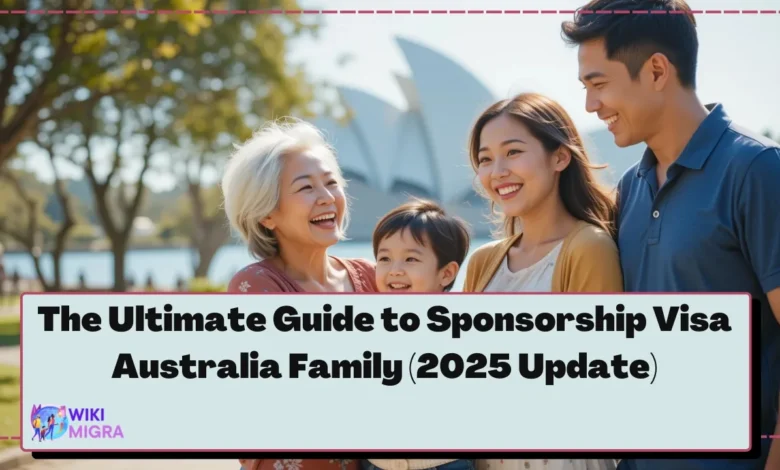
Dreaming of BBQs under the Aussie sun with your loved ones? Bringing family together in Australia is a cherished goal for many citizens and permanent residents. However, navigating the complexities of the sponsorship visa Australia family system can feel like trekking through the outback without a map. From understanding who can sponsor whom, to deciphering visa subclasses and gathering mountains of evidence, the process requires clarity and careful planning.
Here at Immigration Gateway, we understand the deep desire to reunite families. That’s why we’ve created this definitive guide, updated for 2025. Consider this your compass for understanding Australian family visa sponsorship.
What Exactly is “Family Sponsorship” in Australia?
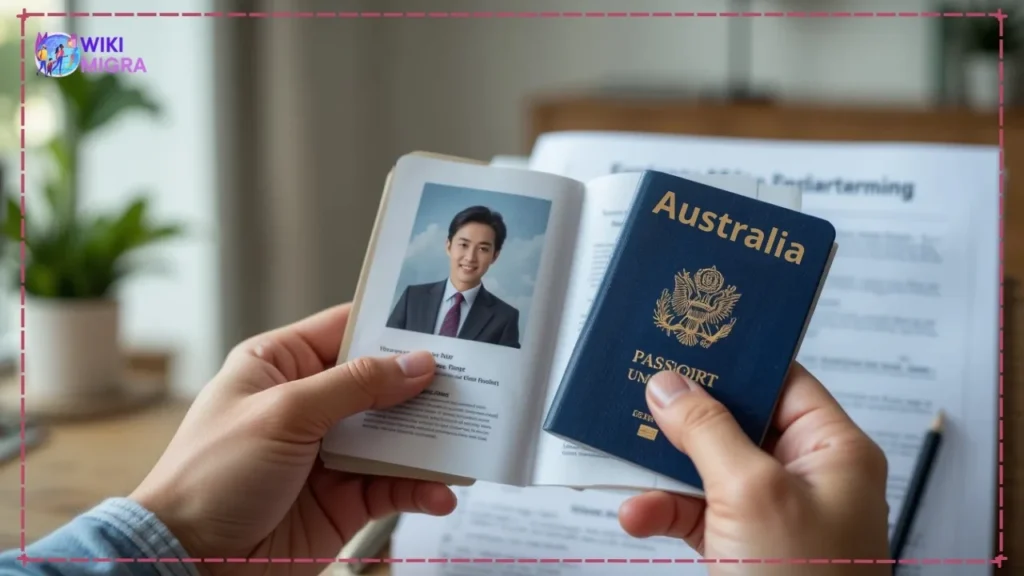
It’s crucial to distinguish between two main concepts often conflated:
- Family-Sponsored Migration Visas: These are visas (often permanent or leading to permanent residency) where an eligible Australian relative (citizen, permanent resident, or eligible NZ citizen) formally sponsors a family member (like a partner, parent, or child) to migrate to Australia. The sponsor takes on specific obligations. This is the primary focus of this guide.
- Family-Sponsored Visitor Visas: This refers specifically to the Sponsored Family Stream of the Visitor Visa (Subclass 600), where an eligible relative sponsors a family member for a temporary visit only. This involves different requirements and obligations, often including a security bond. We’ll cover this too!
Scope of This Guide:
This comprehensive post will illuminate the path for anyone exploring visa options for family Australia in 2025. We will cover:
- Who is eligible to be a sponsor?
- Which family members can be sponsored?
- A detailed breakdown of the major family sponsor visa Australia categories (Partner, Parent, Child, and others).
- An overview of the general application process.
- Key obligations you undertake as a sponsor.
- Realistic insights into costs and processing times (always verify current figures!).
- Common challenges and tips for a smoother application.
- Answers to frequently asked questions about family visa requirements Australia.
Let’s embark on this journey together, demystifying the sponsorship visa Australia family landscape for the year ahead.
You may be interested in: Australian Visa Processing: Ultimate Guide to Processing Times & What to Expect
Understanding the Basics: Who Can Sponsor?
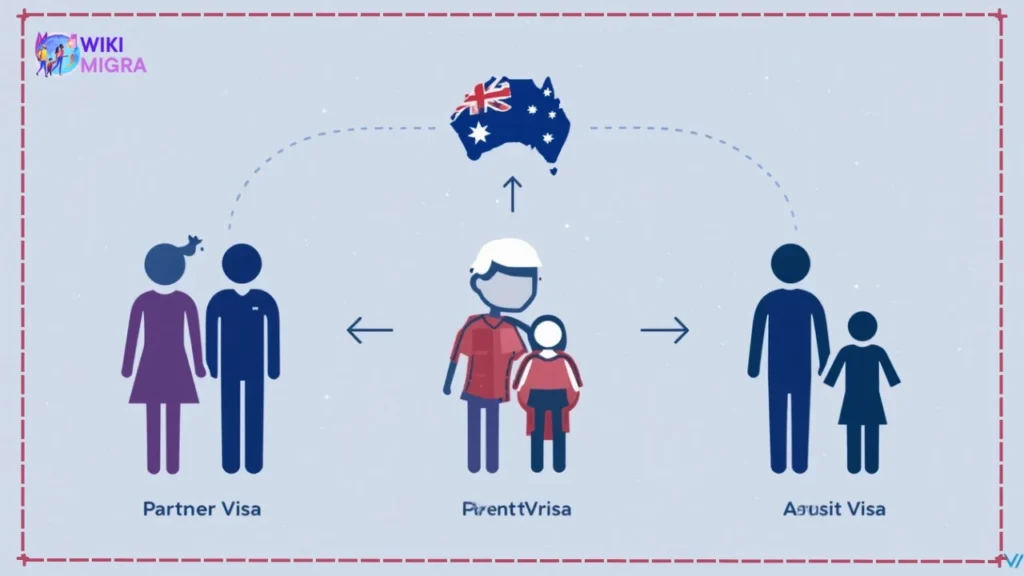
Before dreaming of reunions, the first step is confirming if you (or your family member in Australia) are eligible to sponsor. The Department of Home Affairs sets clear criteria for sponsors in most family visa streams.
Generally, to sponsor a family member for migration, you must be:
- An Australian Citizen: Holding full citizenship rights.
- An Australian Permanent Resident: Lawfully residing in Australia permanently.
- An Eligible New Zealand Citizen: This usually refers to NZ citizens who hold a Special Category Visa (SCV) and meet specific residency criteria, particularly those established before or adapted after key legislative dates. The definition of ‘eligible’ can be complex and requires careful checking against current regulations.
Beyond status, other standard requirements usually include:
- Age: You must typically be 18 years of age or older.
- Residency: For many sponsorships (especially partners), you need to be considered ‘usually resident’ in Australia. While temporary absences are okay, you must demonstrate a clear intention to reside in Australia long-term with the applicant.
- Character: Sponsors must generally meet character requirements. This often involves providing police checks from Australia and any country where you’ve spent 12 months or more in the last 10 years since turning 16. Certain criminal convictions or other character concerns can impact your ability to sponsor.
- Specific Visa Requirements: Some visas, particularly Parent visas, might have additional financial capacity requirements (like meeting income thresholds for the Assurance of Support) or limitations based on previous sponsorships.
(E-E-A-T Signal & Further Reading): The specifics can vary slightly depending on the visa subclass. Always refer to the Department of Home Affairs website for the most current and detailed sponsor eligibility criteria for the specific visa you are considering.
Understanding the Basics: Who Can Be Sponsored?
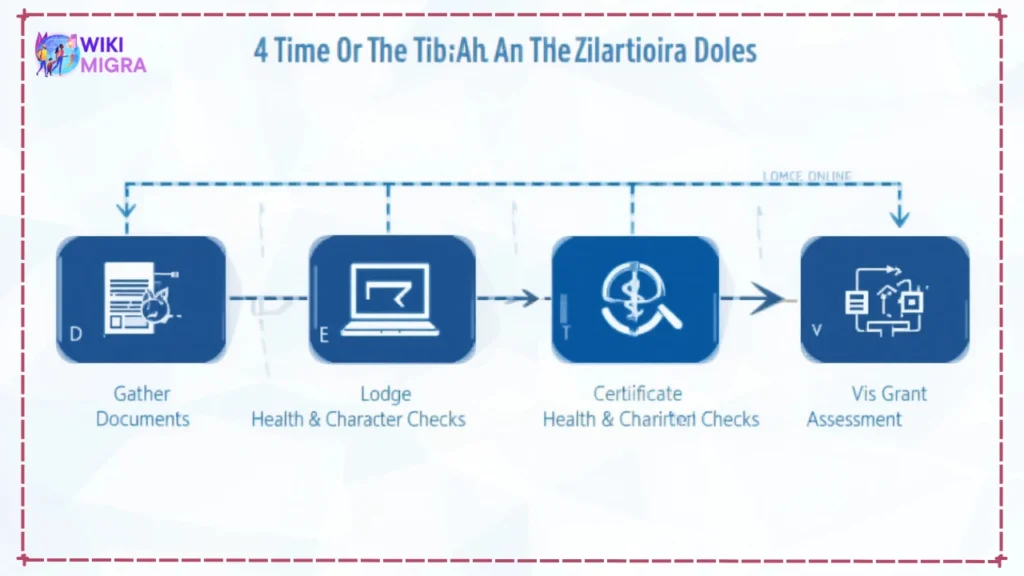
Australia’s family migration program allows eligible sponsors to bring various relatives to Australia. The main categories of family members who can be sponsored include:
- Partners: This includes:
- Spouses: Legally married partners.
- De Facto Partners: Partners living together in a genuine, committed relationship (usually requiring evidence covering at least 12 months, though exceptions apply) but not legally married. This includes same-sex couples.
- (Applies to Partner Visas – Subclasses 309/100, 820/801)
- Fiancé(e)s: Intended spouses who plan to marry their Australian sponsor after arriving in Australia on a specific temporary visa.
- (Applies to Prospective Marriage Visa – Subclass 300)
- Dependent Children: Biological children, step-children, or adopted children who are dependent on their sponsoring parent. Age limits and specific dependency criteria apply and must be met at the time of application and decision.
- (Applies to Child Visas – Subclasses 101, 802, 445, 102)
- Parents: Biological, adoptive, or step-parents of an Australian citizen, permanent resident, or eligible NZ citizen settled in Australia. Strict eligibility, including potentially the ‘Balance of Family test’ (for most permanent parent visas), often applies, alongside significant financial requirements.
- (Applies to Parent Visas – Subclasses 103, 143, 173, 804, 864, 884, and the temporary 870)
- Other Relatives: In very specific and often numerically limited circumstances, other relatives like dependent aged relatives, remaining relatives (those with no other close family overseas), or carers (needed to care for an Australian relative with a verified medical condition) may be sponsored. These pathways often have very long waiting periods or may be closed to new applicants periodically.
- (Applies to Other Family Visas – Subclasses 114, 838, 115, 835, 116, 836)
Understanding which visa category aligns with your specific family relationship is the next crucial step.
Major Family Sponsorship Visa Categories: An Overview for 2025
The sponsorship visa Australia family program encompasses several distinct pathways. Here’s a look at the main ones relevant for 2025:
1. Partner & Prospective Marriage Visas (Subclasses 300, 309/100, 820/801)
These remain among the most common family sponsor visa Australia applications. They allow Australian citizens, permanent residents, or eligible NZ citizens to sponsor their partners.
- Purpose: To enable partners or fiancés to live in Australia permanently.
- Who For: Spouses, de facto partners (including same-sex partners), and prospective spouses (fiancés).
- Core Sponsorship Requirement: The Australian partner acts as the sponsor, requiring approval of the sponsorship application alongside the visa application. Demonstrating the genuine and ongoing nature of the relationship is paramount.
- Key Features:
- Offshore (Subclass 309/100): For partners applying from outside Australia. The 309 is temporary, leading to the permanent 100 visa eligibility assessment typically two years after the initial application, provided the relationship continues.
- Onshore (Subclass 820/801): For partners applying whilst in Australia (must hold a valid substantive visa allowing an onshore application). The 820 is temporary, leading to the permanent 801 visa eligibility assessment under a similar timeframe and conditions.
- Prospective Marriage (Subclass 300): For fiancés applying from outside Australia. Allows entry for 9-15 months to marry the sponsor in Australia and then apply for an onshore Partner visa (820/801) before the Subclass 300 expires.
- Evidence Focus: Significant emphasis remains on proving the relationship is genuine and continuing across the four pillars: financial aspects, nature of the household, social aspects, and the nature of the commitment. Consistency and depth of evidence are key.
2. Parent Visas (Subclasses 103, 143, 173, 804, 864, 884, 870)
Sponsoring family members Australia often involves bringing parents over. This pathway continues to be complex, costly, and subject to long waits or specific requirements in 2025.
- Purpose: To allow parents to live with their settled children in Australia, either temporarily or permanently.
- Who For: Parents whose child is an established Australian citizen, permanent resident, or eligible NZ citizen meeting settlement criteria.
- Core Sponsorship Requirement: The child (or sometimes their partner) acts as the sponsor. For most permanent options, the sponsor must meet, or find an assurer who meets, the requirements for an ‘Assurance of Support’ (AoS).
- Key Features (as relevant in 2025):
- Complexity & Caps: Permanent parent visas (103, 143, 173, 804, 864, 884) remain subject to annual capping and potential queuing, leading to extended processing times. Policy changes can affect availability and processing priorities.
- Contributory vs. Non-Contributory:
- Contributory (Subclasses 143, 173, 864, 884): Involve significantly higher application charges (expect costs potentially exceeding AUD $50,000 per applicant, paid in stages) but offer much faster processing relative to non-contributory options. Includes temporary options (173, 884) leading to permanent (143, 864).
- Non-Contributory (Subclasses 103, 804): Lower application charges but face extremely long processing times due to low annual caps (potentially decades). Often impractical for many families.
- Aged Parent Visas (Subclasses 804, 864, 884): For parents old enough to qualify for the Australian Age Pension, allowing them to apply onshore (if holding a suitable visa). Still subject to caps/queues or high costs (contributory).
- Balance of Family Test: Most permanent options still require parents to meet this test (at least half their children living permanently in Australia, or more here than any other single country). Check current policy as this test is sometimes reviewed.
- Assurance of Support (AoS): Remains a mandatory and significant financial undertaking for most permanent parent visas. The assurer guarantees financial support and repays certain social security benefits if claimed. Requires meeting an income test and lodging a substantial bond (expect amounts around AUD
10,000−10,000−14,000 for a 10-year period, subject to indexation). - Sponsored Parent (Temporary) Visa (Subclass 870): Continues as an option for a longer temporary stay (3 or 5 years, renewable up to 10 years total). No Balance of Family test or AoS bond, but requires approved sponsorship and significant visa application charges. Does not lead directly to permanent residency.
3. Child Visas (Subclasses 101, 102, 445, 802)
These visas allow eligible children to join their parents in Australia.
- Purpose: For children outside or inside Australia to live permanently with their sponsoring parent(s).
- Who For: Biological children, adopted children, or step-children who meet specific dependency criteria and age limits, sponsored by an eligible Australian parent.
- Core Sponsorship Requirement: The eligible parent in Australia sponsors their child.
- Key Features:
- Child Visa (Subclass 101 – Offshore / 802 – Onshore): Standard pathway for dependent children. Strict adherence to age and dependency criteria is vital.
- Adoption Visa (Subclass 102): For children adopted outside Australia by an Australian citizen/PR according to specific international agreements or laws.
- Dependent Child Visa (Subclass 445): Allows a child to be added to their parent’s temporary partner visa (e.g., 309 or 820) or Prospective Marriage visa (300) while it’s being processed or held, before the permanent stage is decided.
4. Other Relative Visas (e.g., Remaining Relative, Carer – Subclasses 115, 835, 116, 836, Aged Dependent Relative 114/838)
These cover less common sponsorship visa Australia family scenarios and remain highly restricted.
- Purpose: To allow migration for aged dependent relatives, remaining relatives with no other close family overseas, or essential carers.
- Who For: Individuals meeting very specific definitions (e.g., financially dependent older relative, person whose only near relatives live in Australia, person needed for substantial ongoing care due to a verified medical condition).
- Core Sponsorship Requirement: An eligible relative in Australia acts as the sponsor, and an Assurance of Support is typically required.
- Key Features (as of 2025):
- Extremely Strict Criteria & Low Caps: Eligibility remains tightly defined. These visas are subject to very low annual limits and often have extremely long processing times (potentially decades), making them inaccessible for most. Some may be effectively closed to new applications. Always check current status.
5. Visitor Visa – Sponsored Family Stream (Subclass 600)
This is not a migration visa, but it’s an important part of the Australian family visa sponsorship landscape for temporary visits.
- Purpose: To allow people to visit family in Australia for a temporary period, where formal sponsorship helps demonstrate the visit’s genuineness and provides support. Often used when the applicant might otherwise find it difficult to meet standard visitor visa criteria.
- Who For: Individuals intending a temporary visit (tourism, seeing family) who have an eligible family member in Australia willing and able to sponsor them.
- Core Sponsorship Requirement: An eligible Australian relative formally sponsors the visit. The Department may require the sponsor to lodge a security bond (amount varies, potentially AUD $5,000 – $15,000+) as a guarantee the visitor will comply with conditions and depart.
- Key Features:
- Temporary Stay: Strictly for visiting; usually no work rights. Length of stay granted varies (typically 3-12 months).
- Sponsor Obligations: The sponsor undertakes responsibilities for the visitor’s compliance with visa conditions, including departure before the visa expires. Financial support during the stay might also be an implicit expectation.
- Security Bond: Not automatic, but can be requested by the Department based on assessment factors. Refundable upon compliance.
Mentioning Dependants on Other Visas
It’s worth reiterating that family members can also come to Australia as dependants on other visa types (e.g., work or study visas).
- Someone granted an employer-sponsored work visa (like Subclass 482 TSS or permanent 186/187) can usually include their partner and dependent children.
- Student visa holders (Subclass 500) can often bring eligible family members (partner, children).
In these scenarios, the primary visa holder’s eligibility is key, and their family members are included as secondary applicants. This process differs from the dedicated family sponsor visa Australia streams where the family member in Australia initiates the sponsorship.
The Sponsorship Application Process: A General Overview for 2025
While specifics vary, the core stages for lodging a sponsorship visa Australia family application generally remain consistent:
- Eligibility Check: Thoroughly confirm both the sponsor and applicant meet all current requirements for the chosen visa subclass. Regulations can change!
- Gathering Evidence: This critical stage requires compiling extensive documentation. Requirements are particularly high for Partner visas (proving the relationship) and Parent visas (relationship proof, AoS financials). Essential documents typically include:
- Identity documents (passports, birth certificates, name change documents).
- Relationship evidence (marriage/birth certificates, detailed history, proof of cohabitation, joint finances/assets, social recognition, photos, statements).
- Character documents (up-to-date police certificates from all required countries).
- Financial documents (payslips, tax assessments, bank statements – vital for AoS).
- Completed sponsorship forms and undertakings.
- Lodgement: Applications are predominantly lodged online via the Department of Home Affairs’ ImmiAccount portal. This involves accurately completing detailed forms and uploading high-quality scans of all supporting documents. The relevant Visa Application Charge (VAC) must be paid at lodgement.
- Biometrics: Applicants (and sometimes sponsors) may need to provide fingerprints and a photograph at a designated collection centre.
- Health Examinations: Applicants must meet the health requirement by undergoing medical examinations with Department-approved panel physicians.
- Character Assessment: The Department assesses character based on police certificates, declarations, and potentially other checks. Any issues must be declared upfront.
- Assessment & Request for Information (RFI): A case officer reviews the application and sponsorship. They may issue an RFI if further information or clarification is needed. Prompt, complete responses are essential to avoid delays or refusal.
- Assurance of Support (AoS) Application (if applicable): For relevant visas, the sponsor/assurer applies separately to Services Australia (Centrelink) for AoS assessment after being invited by Home Affairs. This involves passing the income test and lodging the required bond.
- Decision: The Department provides a formal decision in writing. A grant includes the visa details, conditions, and entry requirements. A refusal outlines the reasons and any review/appeal rights (strict time limits apply).
Sponsor’s Role: The sponsor typically lodges a separate sponsorship application (often concurrently online), provides their own supporting documents, may need to communicate with the Department, and must fulfil their legal obligations from the time of sponsorship approval.
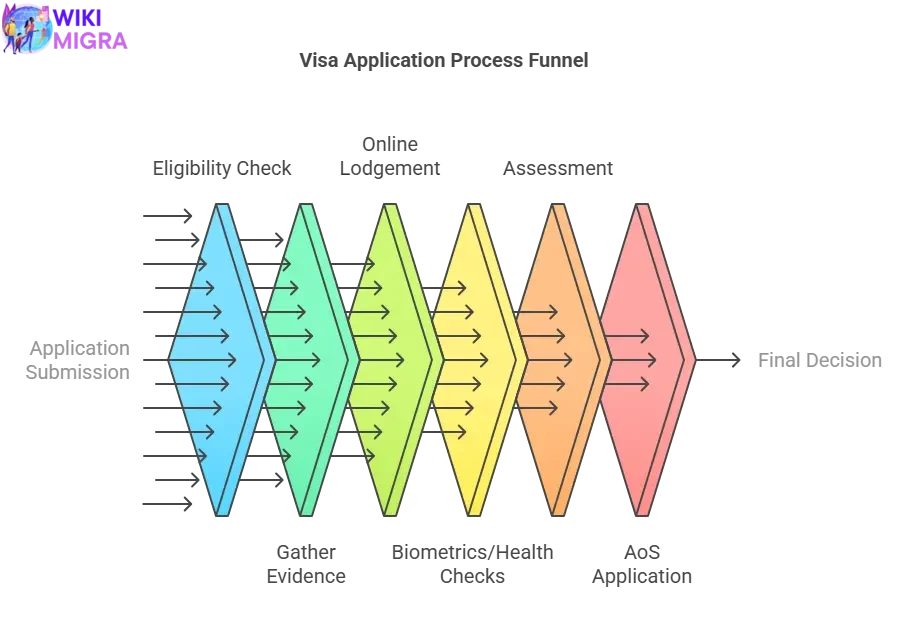
You may be interested in: Visa Processing Times for Australia: A Comprehensive Guide
Key Sponsor Obligations in 2025: What You Need to Know
Acting as a sponsor for a family sponsor visa Australia continues to carry significant legal obligations in 2025. Understand these before committing:
- Financial Responsibility: You are generally considered financially responsible for the sponsored person, particularly during their initial settlement period. For visas requiring an Assurance of Support (AoS), this is a formal, legally binding commitment to repay the government for certain welfare payments claimed by the visa holder during the AoS period (e.g., 10 years for contributory parent visas).
- Accommodation: You must ensure adequate accommodation is available for the sponsored person(s) upon arrival and typically for a specified period (often the first two years for Partner visas, potentially longer implicitly for others).
- Information & Settlement Support: Assisting the applicant with settling into Australia, which may include providing information about essential services, enrolling children in school, accessing English language programs (like AMEP), and potentially job seeking support (where work rights apply).
- Character: Sponsors must maintain good character throughout the sponsorship period.
- Notifying the Department: It remains a mandatory obligation to inform the Department of Home Affairs in writing of certain changes:
- Changes to your circumstances relevant to the sponsorship (e.g., address, contact details, significant financial changes if AoS is involved).
- Breakdown of the relationship with the sponsored applicant (essential for Partner visas).
- Withdrawal of sponsorship (possible before visa decision, but seek advice on implications).
- If the sponsored person breaches their visa conditions (though less common for sponsors to police this).
Crucial Reminder: These obligations can last for several years and persist even if your circumstances change. Non-compliance can lead to debt recovery action (repaying Centrelink), cancellation of the sponsorship, and impact your future ability to sponsor anyone.
Costs & Processing Times in 2025: Setting Realistic Expectations

Pursuing a sponsorship visa Australia family pathway remains a significant investment of both time and money in 2025.
Costs:
Visa Application Charges (VACs) are set by the government and typically increase annually on 1 July. Always verify current fees directly on the Department of Home Affairs website before budgeting or applying. The figures below are indicative only based on trends and previous years:
- Partner Visas (309/100, 820/801): Expect fees potentially exceeding AUD $9,000+.
- Prospective Marriage Visa (300): Similar initial cost to Partner visas, plus the cost of the subsequent onshore Partner visa application.
- Contributory Parent Visas (143, 864): Total cost likely well over AUD $50,000+ per applicant, paid in instalments.
- Temporary Contributory Parent Visas (173, 884): Significant initial fee (potentially $35,000+), plus a large second instalment for the permanent stage.
- Non-Contributory Parent Visas (103, 804): Lower VAC (potentially $7,500+), but processing times remain prohibitive.
- Sponsored Parent (Temporary) Visa (870): Expect fees around AUD $6,000+ (3 years) or $12,000+ (5 years), plus sponsorship fee.
- Child Visas (101, 802): Likely around AUD $3,000 – $3,500+.
- Visitor Visa (600) – Sponsored Family Stream: Standard visitor fee (around AUD $200+), PLUS the potential requirement for a security bond (e.g., $5,000 – $15,000+).
Other Potential Costs:
- Assurance of Support (AoS) Bond: (Where applicable) Expect bond amounts for Contributory Parent visas to be around AUD $10,000 (main applicant) + $4,000 (secondary applicant), held for 10 years. Subject to government review and indexation.
- Health Examinations: Costs vary by country and tests required (allow
300−300−600+ per person). - Police Certificates: Fees differ significantly by country.
- Biometrics Collection: May involve service fees.
- Document Translation: Costs depend on volume and language.
- Migration Agent Fees: If using professional help (fees vary widely based on service and complexity).
Processing Times:
Processing times remain dynamic, influenced by application volumes, staffing, policy priorities, and application quality. The official Visa Processing Time guide tool on the Home Affairs website is the ONLY reliable source for current estimates. Direct link to Home Affairs Processing Time Tool here
- Partner Visas: Can still range from several months (for very straightforward, well-documented cases) to over two years. Complexity and RFIs significantly extend times.
- Contributory Parent Visas: While faster than non-contributory, expect processing times measured in years (potentially still 6-12+ years depending on caps and backlog).
- Non-Contributory Parent Visas: Processing times remain exceptionally long, likely exceeding 30+ years based on current caps and queues.
- Child Visas: Highly variable, often 1-2+ years, sometimes longer depending on circumstances (e.g., custody issues).
- Sponsored Parent (Temporary) 870: Generally processed faster than permanent options, potentially within 4-9 months, but subject to checks.
- Visitor Visa (600) Sponsored Stream: Typically processed within weeks to a few months, depending on individual checks and peak periods.
Key Takeaway for 2025: Budget generously for fees and associated costs. Plan for potentially lengthy waiting periods and manage expectations accordingly.
You may be interested in: Understanding Points System for Australian Immigration 2025
Common Challenges & Tips for Success in 2025

Navigating Australian family visa sponsorship successfully requires anticipating and overcoming potential challenges:
Common Challenges:
- Relationship Evidence Standards (Partner Visas): The Department maintains high standards for proving genuine relationships. Providing sufficient, consistent evidence across financial, household, social, and commitment aspects remains crucial. Digital communication evidence needs context.
- Assurance of Support (AoS) Hurdles (Parent & Other Visas): Meeting the AoS income threshold (which is indexed annually) remains a significant challenge for many potential assurers. Securing an eligible assurer can delay applications.
- Extended Processing Times: Managing the emotional and logistical strain of long waits, especially for separated families, continues to be a major factor.
- Health Requirement Complexities: Certain health conditions may require detailed medical opinions and potentially complex health waiver submissions (if applicable).
- Character Issues: Any past criminal convictions or other character concerns for applicant or sponsor require careful handling and full disclosure. Non-disclosure can be fatal to an application.
- Application Completeness & Accuracy: Simple errors, missing documents, or inconsistent information remain common causes of delays and refusals.
Tips for a Smoother Application in 2025:
- Plan Ahead: Start evidence gathering and document collection well in advance. Check passport validity early!
- Be Diligent: Use checklists, double-check forms, ensure names/dates are consistent across all documents. Proofread everything before submission.
- Evidence is King: Go beyond the minimum. Provide strong, diverse, and well-organized evidence, especially for relationships. Include dated evidence spanning the relationship duration.
- Full Disclosure: Honesty is non-negotiable. Disclose any relevant information (health, character, previous visa issues) upfront. Attempting to hide information often leads to worse outcomes.
- Address Potential Issues Proactively: If you anticipate health or character concerns, seek advice early on how best to present the information with supporting context.
- Monitor Communications: Regularly check your ImmiAccount and email (including spam folders) for any communication or RFIs from the Department. Respond fully and by the deadline.
- Keep Evidence Current (Partners): Continue documenting your relationship throughout the processing period. The assessment considers the relationship up to the point of decision.
- Seek Professional Guidance: For complex situations (e.g., Parent visas, AoS issues, character/health concerns, previous refusals, relationship evidence challenges), investing in advice from a Registered Migration Agent (RMA) is strongly recommended. Their expertise in current laws and policies can be invaluable.
Frequently Asked Questions (FAQ) about Family Sponsorship Visas (2025)
Here are updated answers to common questions about the sponsorship visa Australia family process for 2025:
- Q1: Can my cousin or uncle sponsor me for a family visa in 2025?
- A: No, sponsorship for mainstream migration visas (Partner, Parent, Child) is generally restricted to those specific relationships (partners, parents, dependent children). Cousins, uncles, aunts, nephews, nieces, and siblings cannot directly sponsor each other for these visas. The very limited ‘Other Relative’ categories (Remaining Relative, Carer) have extremely strict criteria unrelated to these relationships and are often impractical due to long waits and caps.
- Q2: What are the estimated total costs for sponsoring my parents in 2025?
- A: Sponsoring parents remains very expensive, especially for permanent options. For Contributory Parent visas (e.g., Subclass 143), expect total government charges well over AUD $50,000 per parent (paid in stages), plus the requirement to lodge an Assurance of Support bond (potentially $14,000+ for a couple, held for 10 years). Add costs for health checks, police certificates, etc. The Non-Contributory route has lower fees but prohibitive waiting times. The Temporary Subclass 870 visa avoids the AoS bond but has substantial visa fees (e.g., $12,000+ for 5 years). Always check official fee schedules.
- Q3: Are processing times for Partner Visas improving in 2025?
- A: Processing times fluctuate. While the Department aims for efficiency, Partner visa processing still often takes between 6 months and 2+ years. Factors like application completeness, complexity (e.g., character/health issues, documenting de facto relationships), and overall application volume heavily influence individual timelines. Check the official Processing Time tool regularly, but prepare for a potentially long wait.
- Q4: Has the Assurance of Support (AoS) income requirement changed for 2025?
- A: The AoS income requirement is set by Services Australia (Centrelink) and is indexed annually, usually on 1 July. You must meet the income threshold applicable at the time your AoS application is assessed. Therefore, the required income level for 2025 will likely be higher than in 2024. Always check the current threshold on the Services Australia website when preparing for AoS.
- Q5: Is it worth getting a migration agent for a ‘simple’ family sponsorship application in 2025?
- A: Even seemingly simple applications can have hidden complexities. While not mandatory, a Registered Migration Agent (RMA) provides value by ensuring completeness, accuracy, and compliance with current laws and policies, potentially avoiding costly mistakes or delays. For complex visas like Parent visas or applications with any potential issues (health, character, relationship evidence gaps), professional help is highly advisable. For straightforward cases, it provides peace of mind. Compare the agent’s fee against the visa cost and the potential impact of refusal.
Conclusion: Your Family’s Journey to Australia in 2025
Reuniting your family in Australia is a significant life goal. The sponsorship visa Australia family pathways provide the means, but success in 2025 requires diligent preparation, patience, and a clear understanding of the current requirements.
From verifying sponsor eligibility and selecting the appropriate family sponsor visa Australia (Partner, Parent, Child, Visitor) to navigating the application process, compiling robust evidence, and managing the financial and time commitments, the journey demands careful attention to detail.





